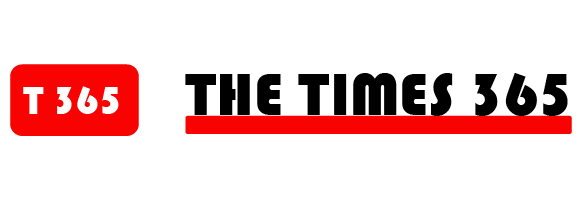In 1952, a book appeared that redefined children’s literature. “A lap is so you don’t get crumbs on the floor,” it proclaimed. “A mustache is to wear on Halloween. A hat is to wear on a train.” The book didn’t even try to tell a story. Instead, it spoke in associative logic and whimsical spot illustrations, leapfrogging from definition to definition, explaining how the world works. Its author, Ruth Krauss, had gathered many of the definitions from actual children—including the book’s title, “A Hole Is to Dig”—and worked with a little-known twenty-three-year-old artist named Maurice Sendak to draw the squirmy, cheeky kids on each page. As Krauss told her editor, the Harper & Row legend Ursula Nordstrom, “I’m afraid I’ll have a good book in spite of myself.”
In the past two months, New York Review Books reissued “The Backward Day” (1950) and“Everything Under a Mushroom” (1973), two works that frame Krauss’s career. “The Backward Day,” with spare line drawings by Marc Simont, tells the story of a boy who wakes up one morning, declares that “Today is backward day,” and goes about his morning in reverse. “Everything Under a Mushroom” is even more formally strange: each of the book’s two-page spreads features a simple, hypnotic poem and, underneath it, a richly panoramic scene by Margot Tomes. Taken together, the books showcase how Krauss pioneered a method that now seems intuitive: portraying the world from the perspective of a child’s imagination.
Krauss was born in Baltimore in 1901. Her paternal grandfather, Leopold, had emigrated from Hungary in the eighteen-sixties and started a successful furrier business, which her father, Julius, joined. Julius, who harbored artistic dreams, made sure that young Ruth was encouraged creatively. She was a sickly child—“I nearly died a lot,” she later recalled—but was nevertheless filled with energy, merrily lifting her dress in front of the neighbors or walking on her hands in the back yard. In 1904, the Great Baltimore Fire ravaged the city, destroying more than fifteen hundred buildings. Though the family’s home and business were spared, Krauss developed a lifelong pyrophobia that compelled her to store her manuscripts in the freezer.
In her teens, Krauss dropped out of high school and enrolled in a costume-design program at the Maryland Institute for the Promotion of the Mechanic Arts. Summers at Camp Walden, in Maine, solidified her love of both mischief and writing. (The camp’s “Backward Party” of 1920, in which campers wore their uniforms the wrong way around, stuck with her for decades.) She had a flirtation with the violin, briefly spending time in a conservatory, but she didn’t get a college degree until 1929, when she graduated from the Parsons School, in New York City. The Great Depression came into full force, and Krauss struggled to find work as an illustrator. In 1939, she joined a friend on an anthropology trip to Montana to live with the Blackfeet Nation, sparking an interest in language and how children absorb culture. Deciding that she would write books for young people, she soon marched into Ursula Nordstrom’s office and slapped a manuscript down on her desk. Nordstrom became Krauss’s primary editor for the next several years.
It’s impossible to discuss Krauss without mentioning her partner, the equally renowned children’s-book author Crockett Johnson. They met at a party in 1939, possibly in Greenwich Village; Johnson was tall and reserved, Krauss small and ebullient. (“We met and that was it!” she later declared.) As Philip Nel observes in “Crockett Johnson and Ruth Krauss,” his richly detailed 2012 biography, the couple completely reshaped the arc of children’s literature. Johnson, a cartoonist and a political activist who created classic works such as “Harold and the Purple Crayon,” championed the power of children’s imagination over the lure of bourgeois rationalism. Though husband and wife mostly published independently, in 1945 they collaborated to produce “The Carrot Seed,” which portrays one boy’s unwillingness to conform to the logic of others. In the book, the protagonist’s parents are afraid that a carrot seed won’t grow. His older brother declares, “It won’t come up.” But the boy, clad in coveralls and a cap, remains steadfast, watering and weeding with determination. Is his care an act of defiance? Optimism? His perspective carries an almost existential force: if you plant a carrot seed, he believes, a carrot must come up. And so it does.
“The Backward Day,” from a few years later, shows Krauss further immersing the reader in a child’s world view. In a riff on Kafka’s “Metamorphosis,” in which a man wakes up as a giant insect, without understanding the principles under which this transformation has occurred, a little boy wakes one morning and declares that the day is “backward.” He pulls his underwear over his clothes and parades backward down the stairs. At the breakfast table, he doesn’t just sit backward but does so in his father’s chair; in backward logic, the boy is his own parent.
But the most striking part of the book comes when the rest of the family enters. “Goodnight, Pa,” the boy says. Without missing a beat, the father says, “Goodnight.” The exchange continues: the boy says, “Goodnight, Ma,” to his mother and “Goodnight, Baby,” to his sister. Each replies, “Goodnight.” The father sits backward in the boy’s chair, and the mother and sister swap seats. The whole family accepts the rule. There’s no argument, no questioning. Backward day is backward day.
This practical magic is revived in “A Hole Is to Dig,” which appeared two years later. The psychologist Arnold Gesell observed that children are, essentially, pragmatists, and Krauss’s great achievement was to take this logic to its extreme, conjuring a concrete vision of the world using the child’s imagination: “Toes are to dance on; eyebrows are to go over your eyes.” She collected the phrases from kindergartners in Rowayton, Connecticut, where she lived, and from four- and five-year-olds at the Bank Street School, in New York City. The resulting book discarded both narrative and the single-perspective technique that had energized “The Backward Day.” In a mode that melded Wittgenstein and Merriam-Webster, Krauss was evoking consciousness itself, as found in the way a specific group of people deployed language.
“A Hole Is to Dig” received glowing reviews. Krauss continued to work, producing at least one book every year of the fifties, even as she and Crockett found themselves under F.B.I. surveillance. (According to Nel, the surveillance began in 1950 and lasted for five years; the F.B.I. cared more about Crockett’s leftist activism than about the couple’s books for young people.) Krauss began experimenting with other forms, including poetry for adults, but she was also frequently ill, suffering from the kinds of infections she was prone to as a child.
In 1973, she hadn’t written a children’s book in three years. “Everything Under a Mushroom” pulled her out of the funk. Like “A Hole Is to Dig,” the book does away with narrative and the notion of a central protagonist. Instead, we get an illustrated poem, which proceeds via associative chaining at the top of each spread. The poem is a series of phrases—four on each page—that begin with “little,” such as “little street little sign little moon little shine.” Krauss builds a simplified version of a pantoum: rather than the second and fourth lines of each quatrain becoming the first and third of the following, the third phrase in the sequence becomes the first phrase in the subsequent set.
The real excitement of “Everything Under a Mushroom” flows from Margot Tomes’s illustrations: delicate, subtly shaded tableaux of kids playing under a giant mushroom cap, their actions echoing the poem but taking on a life of their own. Under “little street little sign little moon little shine,” for example, a child bearing a moon-shaped sign on a stick announces, “Here comes a spare moon.” Later in the book, a bear peeps out of a hole. “Holer-bear is a word in case you are a bear and live in a hole,” one child instructs another, converting what might have been a malapropism (“holer bear” for “polar bear”) into a sensible equation. Some of the pages even suggest Krauss’s politics: “Little spaghetti little sauce little worker little boss / little worker little wages little book little pages,” a section of the poem reads, revealing a deeper exploration of workers’ rights than the book’s lullaby rhythms might let on.
The pantoum could keep ballooning ad infinitum, but Krauss concludes by handing it over to the children. The final two quatrains are in much smaller type than the rest: “Little bee little honey little cook little macaroni / little tail little puppy little coffee little cuppy.” The words appear under the mushroom cap, instead of governing the world from above. The children have captured the rhyme scheme, but they haven’t caught on to the logic—“little cook” should begin the second set, not “little tail.” It’s a gentle, fitting imperfection; Krauss’s books were never didactic, and her interest was less in moralistic instruction than in the texture of imagination. She explored the world from the bottom up, tending to seeds that are still bearing fruit. ♦






